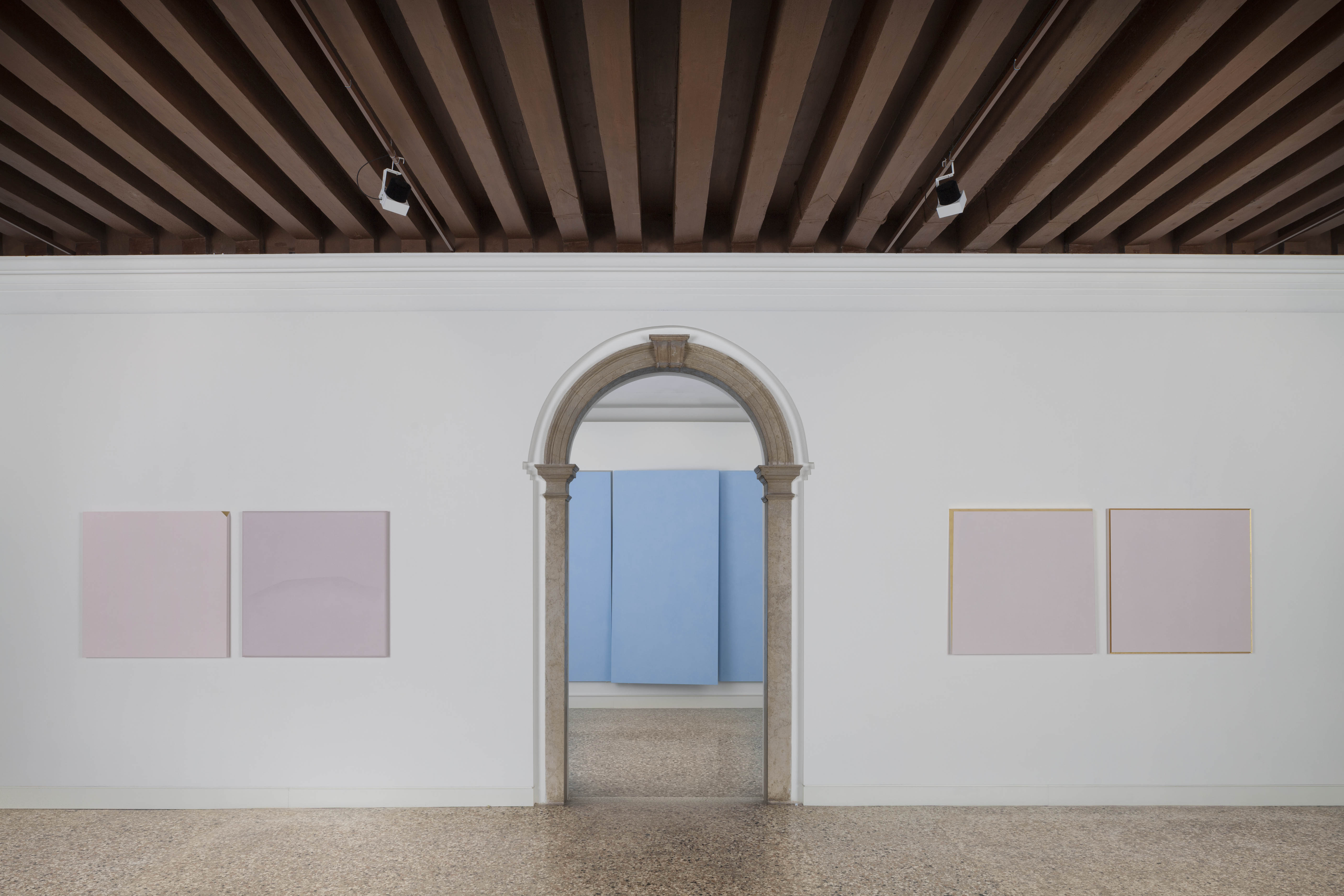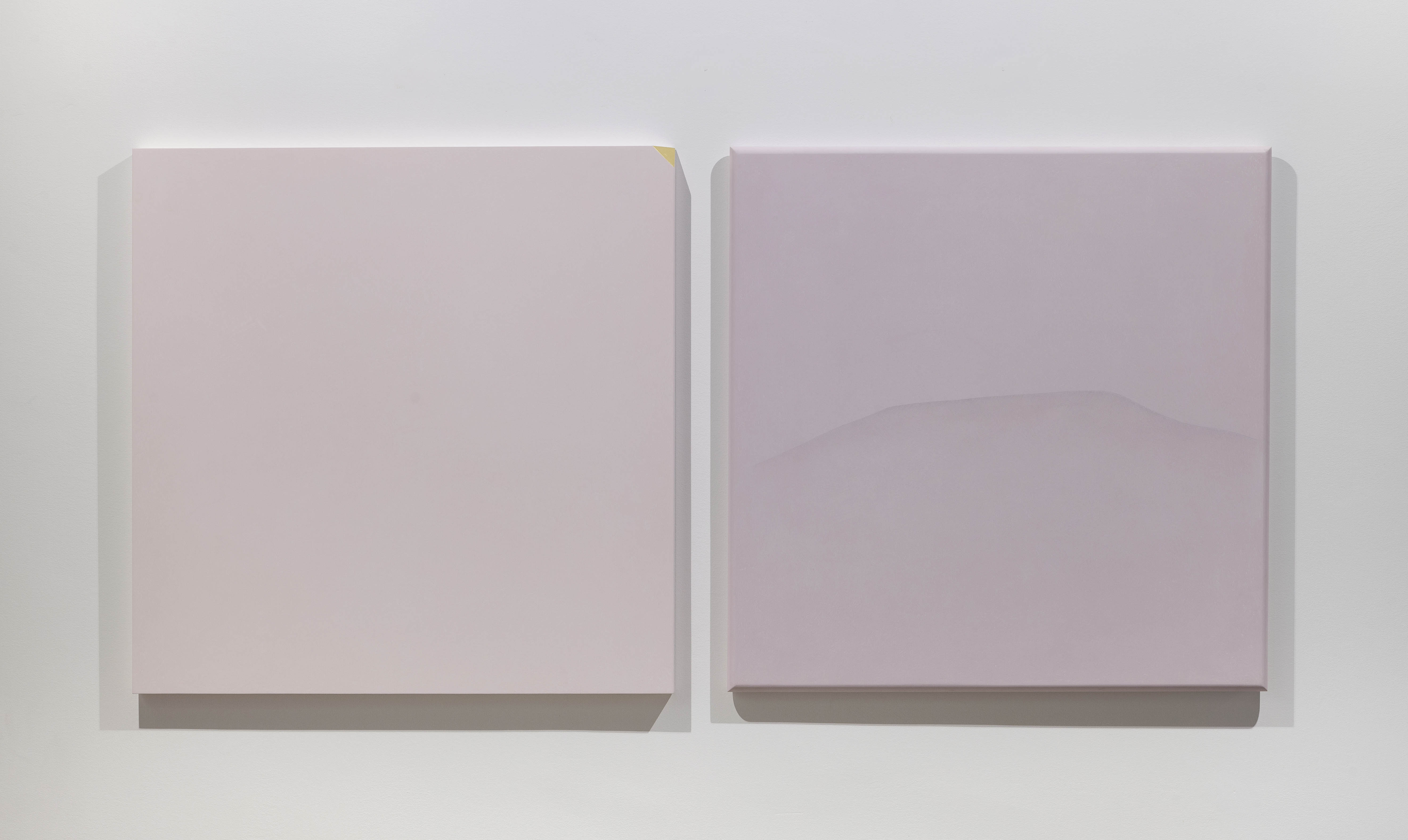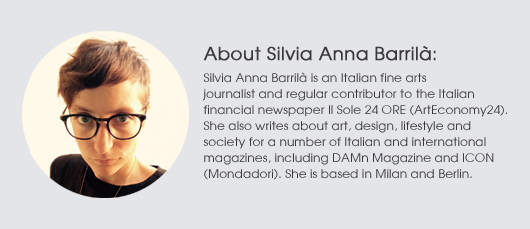
Room 1 – Salon. Photos by Matteo De Fina
PESCARA, Italy – “The color moves and occupies the space that we enter. There is no frame to enclose the space anymore. By removing it, the color takes on the space and invades it. When this succeeds, it is like a miracle.”
With these words Italian artist Ettore Spalletti (below) – born in 1940 in Cappelle sul Tavo near Pescara, where he still lives and works – summarizes the process that triggers in front of his works: monochrome paintings and sculptures that are suspended between painting and sculpture, minimalist geometry and Renaissance classicism.

From the mid-70s, Spalletti has developed an original language that combines color and light. “The main instrument of Spalletti’s work is without any doubt painting,” says gallery owner Benedetta Spalletti from Vistamare gallery of Pescara. She is the daughter to Federica Coen, an art dealer and a collector who died in 2014 and was a key driver of contemporary art in Pescara, and to Vittoriano Spalletti, the artist’s brother. “In his work the medium of painting conveys in a personal use of the mixture of color produced by a superposition of layers at regular intervals which are subsequently abraded. At this stage, the pigments are broken and the color comes out. Light and space are basic elements of his works. Every morning, when Spalletti enters the studio, he feels a sense of wonder at the sight of his works which appear always different than the day before. This is, in short, the history of his work.”
Spalletti’s production times are long: The color is applied once a day for 10 days and also the curing times are important because they are the ones that give the final texture of the work. The artist observes the same work for several months with different lights. Eventually the pigments are scattered on the surface and only then one can see the outcome of the working process.
The colors that are most characteristic for his work are light blue and pink. Spalletti considers them atmospheric colors more than colors for surfaces; they give off their aura about what is around and envelop the viewer. “If you take a walk in a sunny day you feel immersed in the blue,” Spalletti said in an interview with RAI, referring to the sky but also to the light blue of the Adriatic Sea that mingles with the sky on the horizon line.” An example is his painting Testa, la bella addormentata, 1983, color impasto on wood.

“Pink is for me the color of the skin that is not fixed, but depends on mood; sometimes pink becomes livid. Gray is a color that I often use because, at least for me, it is the color of hospitality, that means that it best accommodates all other colors. White is the color of light: its pigments freely move around in the room, it forces you to silence.”
Ma, sì, rosa e oro, 2013, color impasto on wood, gold foil (below left) and Impasto di colore rosa, tuttotondo, 2010, color impasto and contè-crayon on wood (below right) are examples.

From a market point of view, in recent years prices for Spalletti’s work have consistently increased also because of many exhibitions in prestigious museums at the national and international level. Last year, for example, three Italian museums such as MADRE in Naples, MAXXI in Rome and GAM in Turin have dedicated to the artist the most complete retrospective ever made. Spalletti has previously exhibited at the Venice Biennale in 1982, in 1993, in 1995 and 1997—when he represented Italy—and Documenta in Kassel in 1982 and 1992. Solo exhibitions were organized also in museums such as the Museum Folkwang in Essen (1982), De Appel in Amsterdam, Kunstverein in Monaco and Portikus in Frankfurt (1989), the Musée d’Art Moderne de la Ville de Paris (1991), the Solomon R. Guggenheim Museum New York (1993) and the MUHKA of Antwerp (1995).
Spalletti’s prices range between €30,000 and €400,000, but according to Benedetta Spalletti there is still ample room for growth and discovery. “Painting has always been his most recognized and distinctive technique; the most appreciated colors by the market are the ones that he has always used and preferred, such as light blue, pink and white,” Spalletti says, and she adds: “In addition to being very much sought after in Italy, we have many requests coming from the UK, Belgium, France, and USA.
“ Galleria Vistamare has represented Ettore Spalletti since 2001. Other galleries are Lia Rumma from Naples and Milan, Studio La Città from Verona, Galerie Lelong from Paris and Helga de Alvear from Madrid. Spalletti’s works are currently on display at Palazzo Cini in Venice (until Aug. 23). It is an exhibition produced by the artist himself on the occasion of the opening of the second floor of the building: a house-museum was once home to the great collector Vittorio Cini, holding important paintings of Tuscan and Ferrara Renaissance painting.



